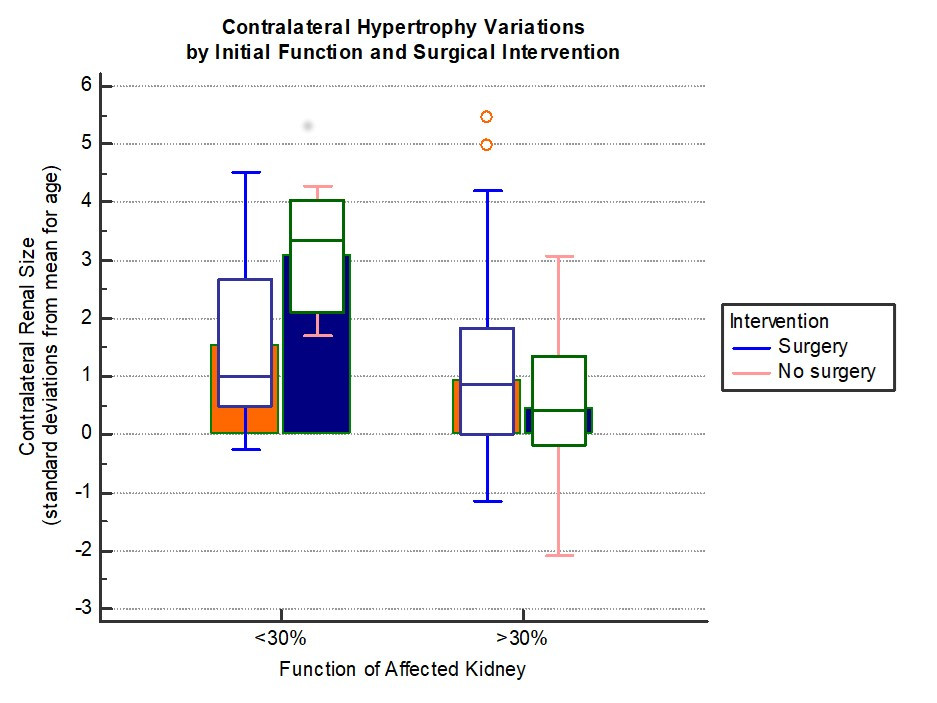Contralateral Compensatory Hypertrophy Can Predict Decreased Renal Function In UPJ Obstruction
Aron Liaw, MD, Maya Overland, MD, Andrew Phelps, MD, Ronald Cohen, MD, Laurence Baskin, MD.
UCSF, San Francisco, CA, USA.
Contralateral Compensatory Hypertrophy Can Predict Decreased Renal Function In UPJ Obstruction.
Introduction and Objective: Compensatory renal hypertrophy has been demonstrated in many processes, including following nephrectomy or partial nephrectomy, and in pediatric congenital conditions such as MCDK. Solitary kidneys have been shown to demonstrate hypertrophy to an average of 2 standard deviations from the mean for age. We investigate the degree of compensatory contralateral hypertrophy in cases of unilateral UPJ obstruction, and the factors that affect this hypertrophy. We hypothesise that otherwise normal contralateral kidneys show compensatory hypertrophy in UPJ obstruction, and that this hypertrophy is affected by intervention.
Methods: Ultrasound reports from two academic pediatric hospitals from 1993 to 2017 were reviewed for UPJ obstruction and ‘severe’ or ‘Grade 3’ or ‘Grade 4’ hydronephrosis. Patients were excluded if they showed bilateral hydronephrosis or contralateral VUR, or in cases of a solitary kidney. Imaging and clinical findings from initial diagnosis to last follow-up were reviewed. Results were analysed with regression analyses, t-test and ANOVA.
Results: 176 cases were identified with a mean follow-up of 46 months. There was statistically significant contralateral hypertrophy present at time of diagnosis (mean 0.66 SD, p=<0.0001), and this increased over time (mean 0.98 SD, p=0.001). When considering kidneys with function <30%, there was significant difference in contralateral hypertrophy between those with poor function and those without (p=0.02). Furthermore, when considering the degree of hypertrophy postoperatively, kidneys with poor function showed more contralateral hypertrophy after surgery than those with closer to normal function (p=0.0004). Patients who had poor function in the obstructed kidney but who did not undergo surgery showed the greatest amount of contralateral hypertrophy, on average double (3.1SD vs 1.5 SD) compared to the same patients who did undergo surgery.
Conclusions: Contralateral compensatory hypertrophy is more common in patients with UPJ obstruction that have <30% function at time of diagnosis. Pyeloplasty has an effect on the degree of contralateral hypertrophy, with the greatest effect seen in those patients with poor function. Renal length in the contralateral normal kidney for patients with UPJ obstruction may be a useful surrogate for split renal function normally obtained by nuclear renogram. 
Back to 2018 Program




